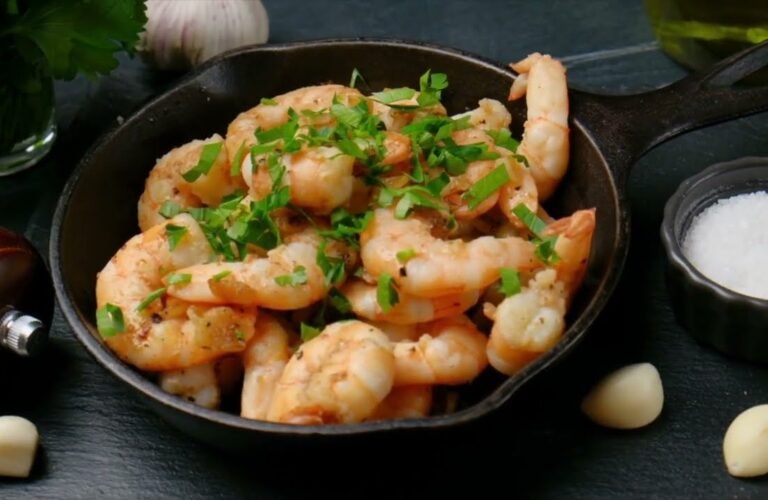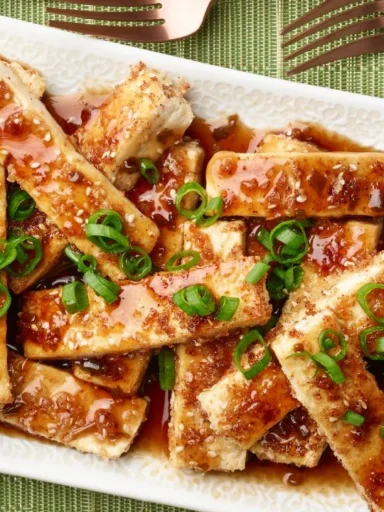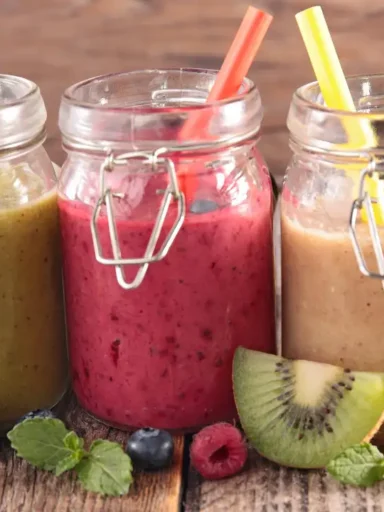Sautéed shrimp is a culinary classic—simple yet sophisticated, quick yet bursting with flavor. This versatile dish, rooted in cuisines from the Mediterranean to the Lowcountry, transforms humble shrimp into a star with just a pan, a handful of ingredients, and a few minutes. Whether you’re a novice cook or a seasoned chef, mastering sautéed shrimp opens the door to endless variations, from garlic butter decadence to spicy Cajun kicks. This 2,000-word guide dives deep into the art and science of sautéed shrimp, offering techniques, recipes, tips, and cultural insights to elevate your cooking game. Let’s explore how to create this crowd-pleaser and make it your own.
The Allure of Sautéed Shrimp
Shrimp, with their sweet, briny flavor and tender texture, are a global favorite, harvested from coastal waters and aquaculture farms alike. Sautéing—cooking quickly in a hot pan with a small amount of fat—enhances their natural qualities, creating a caramelized exterior while keeping the interior juicy. The dish’s appeal lies in its speed (ready in under 10 minutes), adaptability (pair it with pasta, rice, or greens), and accessibility (shrimp are affordable and widely available).
Sautéed shrimp shines in countless culinary traditions. In Italy, it’s scampi, bathed in garlic and white wine. In Louisiana, it’s a Cajun-spiced delight, served over grits. In Spain, gambas al ajillo sizzle with chili and olive oil. Each version shares a core technique but reflects local flavors, making sautéed shrimp a canvas for creativity. Whether you’re cooking for a weeknight dinner or a special occasion, this dish delivers elegance without fuss.
Choosing the Perfect Shrimp
The foundation of great sautéed shrimp is quality ingredients, starting with the shrimp themselves. Here’s how to select and prep shrimp for optimal results.
Types and Sizes
Shrimp are sold by size, measured in “count per pound.” Common sizes include:
- Medium (41-50 count): Versatile for quick sautés or salads.
- Large (31-40 count): Ideal for main dishes, offering a hearty bite.
- Jumbo (16-20 count): Perfect for grilling or bold presentations, though they require slightly longer cooking.
Fresh shrimp should smell briny, not fishy, with firm, translucent flesh. Frozen shrimp, often flash-frozen at sea, are a reliable alternative and dominate the U.S. market (90% of shrimp are imported, per the NOAA). Look for “wild-caught” for richer flavor or “sustainably farmed” for eco-conscious choices.
Prep Tips
- Thaw Properly: If using frozen shrimp, thaw overnight in the fridge or in a sealed bag under cold running water for 15 minutes. Pat dry to ensure even browning.
- Peel and Devein: Remove shells (leave tails on for presentation, if desired) and devein by slicing along the back and rinsing out the dark vein. Pre-peeled, deveined shrimp save time but may lack flavor.
- Season Early: Lightly salt shrimp 10 minutes before cooking to enhance flavor and texture.
Sustainability Note
Overfishing and unsustainable aquaculture can harm marine ecosystems. Choose shrimp certified by the Marine Stewardship Council (MSC) or Aquaculture Stewardship Council (ASC). Gulf of Mexico wild shrimp or U.S.-farmed shrimp are often sustainable options.
The Science of Sautéing Shrimp
Sautéing is a high-heat, dry-cooking method that relies on conduction to transfer heat from the pan to the shrimp. The goal is to achieve a golden crust (via the Maillard reaction) while keeping the interior tender. Here’s the science behind perfect sautéed shrimp:
- High Heat: A hot pan (350-400°F) ensures quick cooking and browning. Preheat the pan for 1-2 minutes before adding oil.
- Fat Choice: Butter adds richness, olive oil offers a neutral base, and a mix of both balances flavor and prevents burning. Use just enough (1-2 tablespoons) to coat the pan.
- Don’t Overcrowd: Crowding lowers the pan’s temperature, causing shrimp to steam rather than sear. Cook in batches if needed, leaving space between shrimp.
- Timing is Key: Shrimp cook in 2-4 minutes, depending on size. They’re done when opaque and pink, with an internal temperature of 145°F. Overcooking makes them rubbery.
A well-seasoned cast-iron or stainless-steel skillet is ideal for even heat distribution, though nonstick pans work for beginners. Avoid aluminum pans, which can react with acidic ingredients like lemon or wine.
Classic Sautéed Shrimp Recipe
This garlic butter sautéed shrimp recipe serves as a foundation, adaptable to your taste. It yields 4 servings and takes 15 minutes total.
Ingredients
- 1 lb large shrimp, peeled and deveined
- 2 tbsp unsalted butter
- 1 tbsp extra-virgin olive oil
- 4 garlic cloves, minced
- 1/4 tsp red pepper flakes (optional, for heat)
- 1/4 cup dry white wine (or chicken broth)
- 2 tbsp fresh lemon juice
- 2 tbsp chopped fresh parsley
- Kosher salt and black pepper, to taste
Instructions
- Prep Shrimp: Pat shrimp dry with paper towels. Season with 1/2 tsp salt and 1/4 tsp pepper. Let sit for 10 minutes.
- Heat Pan: Place a 12-inch skillet over medium-high heat. Add olive oil and 1 tbsp butter. When butter foams, the pan is ready.
- Sauté Shrimp: Add shrimp in a single layer. Cook undisturbed for 1-2 minutes until golden on one side. Flip and cook 1-2 minutes more until opaque. Transfer to a plate.
- Make Sauce: Reduce heat to medium. Add garlic and red pepper flakes; cook 30 seconds until fragrant. Pour in wine and lemon juice, scraping up browned bits. Simmer 1 minute. Stir in remaining 1 tbsp butter and parsley.
- Combine: Return shrimp to the pan, tossing to coat in sauce. Taste and adjust seasoning. Serve immediately with crusty bread, rice, or pasta.
Nutrition (per serving)
- Calories: ~200 kcal
- Protein: 24g
- Fat: 10g
- Carbs: 2g
Variations to Spice It Up
Sautéed shrimp’s versatility invites endless creativity. Here are three global-inspired variations to try, each building on the classic technique:
1. Cajun Sautéed Shrimp
- Inspiration: Louisiana Creole cuisine.
- Ingredients: Add 1 tsp Cajun seasoning (or mix paprika, cayenne, thyme, and garlic powder) to shrimp before cooking. Swap parsley for green onions.
- Method: Sauté with butter and a splash of hot sauce. Serve over creamy grits or dirty rice.
- Tip: Use Gulf shrimp for authentic flavor.
2. Gambas al Ajillo (Spanish Garlic Shrimp)
- Inspiration: Spanish tapas.
- Ingredients: Increase garlic to 6 cloves, add 1 dried guajillo chili (sliced), and use all olive oil (no butter). Omit wine; add 1 tbsp sherry vinegar.
- Method: Sauté shrimp with garlic and chili for 2-3 minutes. Finish with vinegar and parsley. Serve with crusty bread for dipping.
- Tip: Serve in a sizzling cazuela for a restaurant vibe.
3. Coconut Curry Shrimp
- Inspiration: Southeast Asian flavors.
- Ingredients: Replace wine with 1/2 cup coconut milk, add 1 tbsp red curry paste, and 1 tsp grated ginger. Swap parsley for cilantro.
- Method: Sauté shrimp with curry paste and ginger. Add coconut milk and simmer 1 minute. Serve over jasmine rice.
- Tip: Garnish with lime wedges and toasted coconut for texture.
Pairing and Serving Ideas
Sautéed shrimp is a chameleon, pairing beautifully with various sides and beverages. Here are suggestions to round out your meal:
- Sides:
- Starchy: Creamy polenta, linguine, or roasted fingerling potatoes soak up the sauce.
- Vegetables: Sautéed spinach, grilled asparagus, or a citrusy arugula salad add freshness.
- Grains: Quinoa or farro with herbs complements the dish’s lightness.
- Breads: Crusty baguette or garlic bread is perfect for mopping up juices.
- Beverages:
- Wine: Sauvignon Blanc or Pinot Grigio for white wine lovers; a light Pinot Noir for Cajun or curry versions.
- Non-Alcoholic: Sparkling water with lemon or a ginger-lime mocktail.
- Presentation: Serve in a wide, shallow bowl to showcase the shrimp and sauce. Garnish with microgreens or lemon zest for a polished look.
Tips for Success
Mastering sautéed shrimp requires attention to detail. These tips ensure flawless results every time:
- Dry Shrimp Thoroughly: Wet shrimp steam instead of sear, diluting flavor. Use paper towels to pat dry.
- Preheat the Pan: A hot pan prevents sticking and promotes browning. Test with a drop of water—it should sizzle.
- Season Boldly: Shrimp absorb flavors quickly. Don’t skimp on salt, pepper, or spices.
- Work in Batches: Overcrowding leads to uneven cooking. Cook 8-10 shrimp at a time in a 12-inch skillet.
- Use Fresh Ingredients: Fresh garlic, herbs, and lemon juice elevate the dish over pre-packaged alternatives.
- Don’t Walk Away: Shrimp cook fast. Stay at the stove to avoid overcooking.
- Taste the Sauce: Adjust acidity (lemon) or richness (butter) before serving.
For beginners, start with smaller shrimp (41-50 count) for easier handling. Practice the classic recipe before experimenting with bold flavors.
Cultural and Historical Context
Sautéed shrimp has deep roots in coastal cuisines, reflecting the ingenuity of communities tied to the sea. In the U.S., shrimp dishes trace back to Native American and African influences in the Lowcountry, where Gullah cooks paired shrimp with local spices and grits. In Europe, Mediterranean cultures like Spain and Italy perfected garlic-infused shrimp dishes, often served as tapas or antipasti. Asian cuisines, from Thai curries to Chinese stir-fries, showcase shrimp’s ability to carry bold flavors.
The dish’s global popularity grew with the shrimp industry’s expansion in the 20th century, fueled by advances in fishing and aquaculture. Today, shrimp is the most consumed seafood in the U.S., with Americans eating 4.6 pounds per capita annually (NOAA, 2023). Sautéed shrimp remains a beloved preparation, bridging fine dining and home kitchens.
Common Mistakes and How to Avoid Them
Even seasoned cooks can stumble. Here are pitfalls to watch for:
- Overcooking: Shrimp turn rubbery if cooked past opaque. Use a timer and check doneness early.
- Burnt Garlic: Garlic burns quickly, turning bitter. Add it after shrimp are nearly done and cook briefly.
- Soggy Shrimp: Failing to dry shrimp or using a cold pan prevents browning. Pat dry and preheat thoroughly.
- Bland Flavors: Under-seasoning or skipping acid (lemon, wine) dulls the dish. Taste and adjust before serving.
- Crowded Pan: Too many shrimp lower the pan’s heat, steaming them. Cook in batches for a proper sear.
Health Benefits and Considerations
Sautéed shrimp is as nutritious as it is delicious. A 4-ounce serving of shrimp offers:
- Protein: 24g, supporting muscle health.
- Low Calories: ~100 kcal, ideal for light meals.
- Nutrients: Rich in selenium, vitamin B12, and omega-3 fatty acids for heart and brain health.
However, shrimp are high in cholesterol (165mg per serving), though dietary cholesterol has minimal impact on blood cholesterol for most people (Harvard Health). Those with shellfish allergies should avoid shrimp, and sodium-sensitive individuals can reduce salt in the recipe. Opt for olive oil over butter for a heart-healthier version.
Final Thoughts
Sautéed shrimp is more than a dish—it’s a celebration of simplicity, flavor, and versatility. With a hot pan and a few ingredients, you can create a meal that’s both approachable and elegant, rooted in global traditions yet endlessly customizable. From the classic garlic butter version to spicy Cajun or fragrant coconut curry, sautéed shrimp adapts to any palate or occasion.
To master this dish, start with quality shrimp, embrace the science of sautéing, and experiment with flavors that excite you. Pair it with your favorite sides, pour a glass of wine, and savor the fruits of your labor. Whether you’re cooking for one or hosting a dinner party, sautéed shrimp delivers joy in every bite. So grab a skillet, channel your inner chef, and let this timeless dish become a staple in your kitchen.




